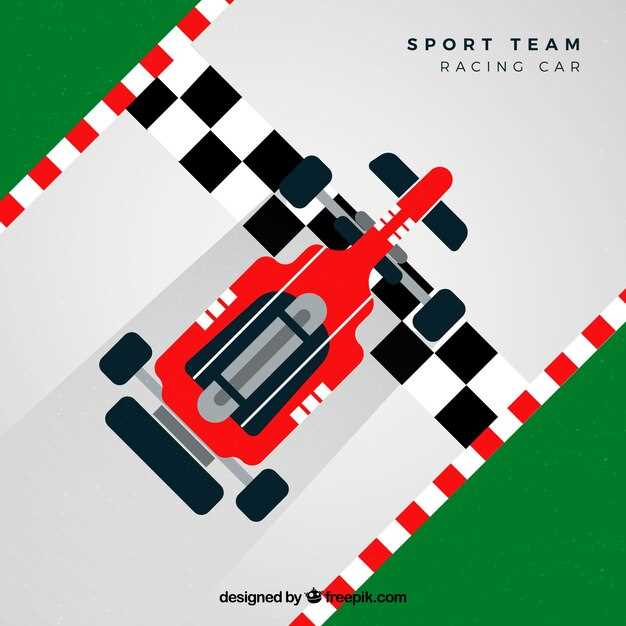
From HPDE to Club Racing – The Progression
- George Harris
- 0
- Posted on

For many automotive enthusiasts, the journey from high-performance driving education (HPDE) events to club racing represents a significant and thrilling evolution in their motorsport experience. This transition is not merely a change in the format of driving; it also involves a shift in mindset, preparation, and understanding of racecraft. As drivers seek to improve their skills, racing provides an environment that demands precision, competitive strategy, and a deeper connection with the vehicle.
HPDE events typically emphasize skill development and safety, allowing participants to explore their vehicles’ limits in a controlled environment. In contrast, club racing introduces a competitive element that challenges drivers to apply those skills in real-time scenarios against their peers. This requires not just mastering vehicle handling but also understanding race rules, tactics, and the nuances of racing lines under varying track conditions.
One of the first steps in making this transition involves a solid grasp of the fundamental differences between HPDE and racing contexts. While the former can focus on individual improvement and enjoyment, club racing emphasizes the importance of strategic teamwork, car setup, and race-day preparation. Additionally, understanding the technical aspects of your car, including how to communicate effectively with your team, becomes vital for success on the track.
This article will guide you through the essential elements of transitioning from HPDE to club racing, including tips for training, vehicle preparation, and the mental aspects of racing. By addressing these key areas, you can ensure a smoother and more rewarding shift into the exhilarating world of club racing.
Understanding the Key Differences Between HPDE and Club Racing

High-Performance Driving Events (HPDE) and Club Racing serve different purposes and attract participants with varying objectives. One of the primary distinctions lies in the structure of the events. HPDEs focus on skill development in a controlled environment, allowing drivers to improve their technique and familiarize themselves with their vehicles at high speeds without the competitive pressure. In contrast, Club Racing is a competitive environment where drivers are vying for position and victory, introducing a dynamic that emphasizes strategy and race craft.
Another significant difference is the level of vehicle preparation and modification allowed. In HPDE, vehicles are often required to meet basic safety standards without extreme modifications. Participants may drive their daily drivers with minimal upgrades. Conversely, Club Racing usually demands a higher standard of vehicle preparation, often requiring specific modifications to improve performance and meet class regulations. This can include upgrades to suspension, braking systems, and safety features such as roll cages and racing seats.
Safety protocols also differ between the two events. While HPDE emphasizes instructional oversight with dedicated instructors guiding novice drivers, Club Racing involves stringent safety measures tailored for competition. Racers must possess a valid racing license and adhere to the rules set by the sanctioning body, which includes wearing appropriate safety gear like helmets, suits, and harnesses.
Furthermore, the pace and conduct of driving differ significantly. HPDE participants typically run in groups based on experience levels, allowing for a more relaxed atmosphere where learning is prioritized. In Club Racing, however, drivers must race at their limits, navigating not only their own performance but also the strategies and skills of their competitors, leading to a more aggressive driving style.
Lastly, the goals for participants vary substantially. HPDE drivers may be motivated by personal improvement and enjoyment of the driving experience, while Club Racing participants are often driven by the desire to win, compete, and gain recognition in motorsport. This competitive spirit changes the mindset and approach drivers take towards their performances and vehicles.
Preparing Your Vehicle for Competitive Racing Specifications

Transitioning from High-Performance Driving Events (HPDE) to club racing requires thorough preparation of your vehicle to meet specific competitive standards. This process involves several critical adjustments and enhancements to ensure your car not only performs at its best but also adheres to the regulations set forth by the racing organization.
First, you should evaluate your vehicle’s safety features. Installing a roll cage is essential, as it provides maximum protection during potential rollovers or collisions. The design and material of the cage should comply with the requirements of the racing series you plan to enter. Additionally, upgrading your seat to a proper racing bucket seat and securing it with a multi-point harness significantly enhances driver safety and control.
Next, the braking system requires attention. High-performance brake pads, rotors, and fluid are necessary to withstand the rigors of competitive racing. Ensure that your braking system is not only upgraded but also properly maintained to guarantee consistent performance throughout the race duration. It’s advisable to replace any OEM components with racing-specific parts that can handle the higher heat and stress of racing conditions.
Your vehicle’s suspension will also require adjustment. Performance-oriented coilovers, sway bars, and adjustable camber plates can help improve handling dynamics. Setting the proper ride height and alignment is crucial for stability and cornering capabilities. Fine-tuning these parameters can make a significant difference in lap times and overall vehicle response.
Engine modifications may be necessary based on the class regulations of your chosen series. Consider enhancing the air intake and exhaust systems to improve horsepower and torque. It’s crucial to balance performance upgrades with reliability; ensure all components are compatible and that any tuning aligns with your racing class specifications.
Finally, a thorough weight reduction might be beneficial. Removing unnecessary interior components and using lightweight materials can improve power-to-weight ratio, which is vital in racing. However, these modifications must comply with the weight regulations of your specific racing category.
In conclusion, preparing your vehicle for competitive racing involves a multi-faceted approach that prioritizes safety, performance, and compliance with racing regulations. Each upgrade should be carefully considered to ensure that your car is race-ready and competitive on the track.
Navigating Licensing Requirements and Club Memberships
Transitioning from High-Performance Driving Events (HPDE) to club racing involves understanding the licensing requirements and the process of joining a racing club. Each racing organization has its own set of rules and guidelines, so it’s crucial to familiarize yourself with them before making the leap.
Most club racing organizations require drivers to obtain a racing license, which often involves participating in a specified number of HPDEs and completing a racing school. The racing school will typically cover essential topics such as race etiquette, flag signals, car control techniques, and track safety. Upon successful completion, you will be awarded a novice racing license, which grants you the ability to compete in designated events.
After acquiring your novice license, it’s important to understand the progression to a full racing license. This usually requires participation in a certain number of races, where your performance will be evaluated by stewards. Many racing clubs implement a point system, where successful finishes lead to the upgrade of your license status. Pay attention to the specific criteria set by the organization you wish to join, as these can differ greatly.
Joining a racing club is another critical step in your transition. Many clubs require a membership to participate in their events. Memberships often come with benefits such as access to exclusive events, discounted entry fees, and valuable networking opportunities with fellow racers and enthusiasts. Research various clubs to find one that aligns with your racing goals and values.
Additionally, be prepared to commit to the club’s rules, which may include attending meetings, volunteering for events, and understanding the organization’s culture. Being an active member can enhance your experience as well as help you build relationships that are valuable in the racing community.
In summary, navigating the licensing requirements and club memberships for racing involves a careful understanding of the prerequisites, the commitment to ongoing improvement, and an active role in the racing community. By investing the necessary time and effort, you will be well on your way to enjoying the thrill of club racing.
